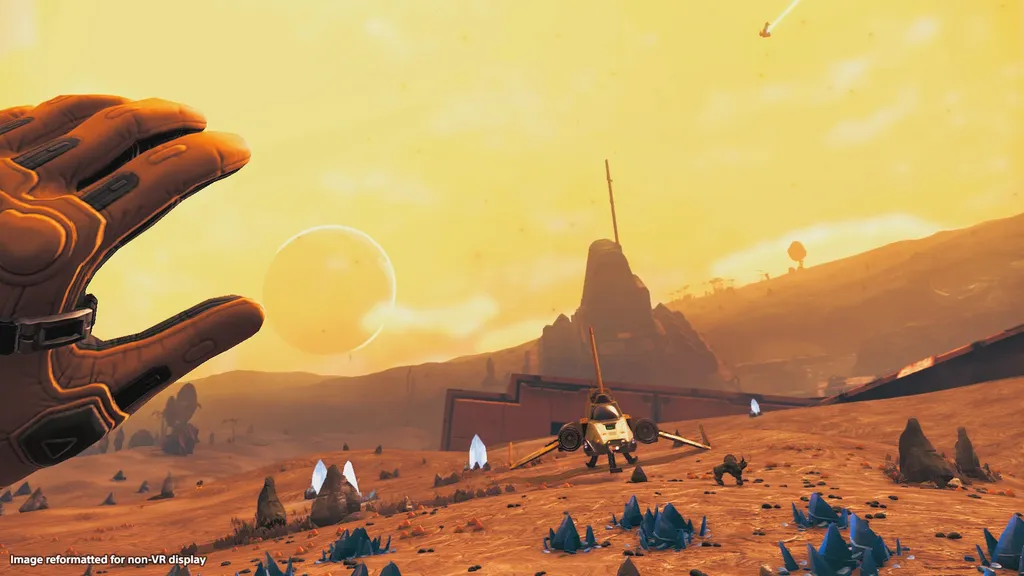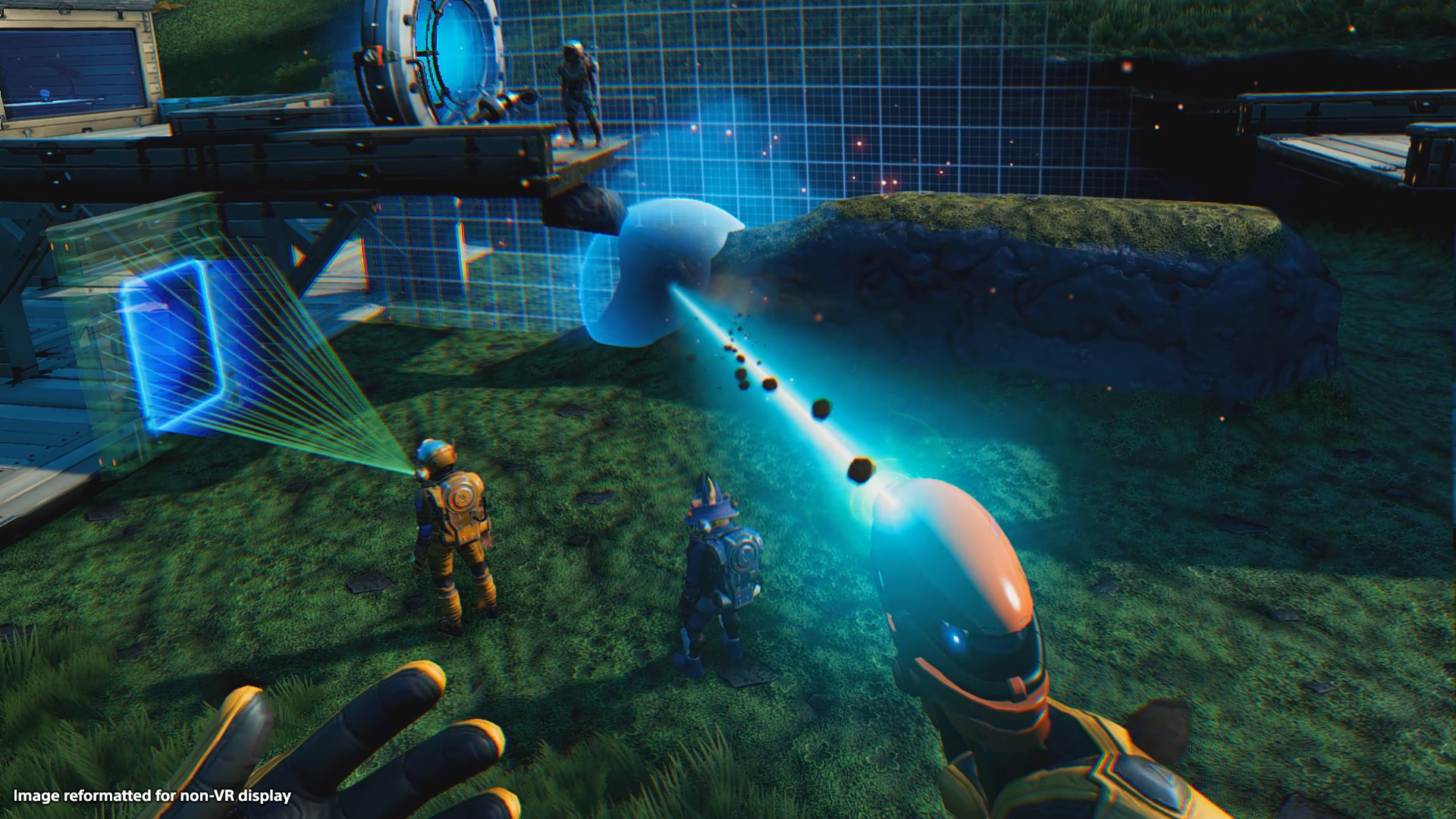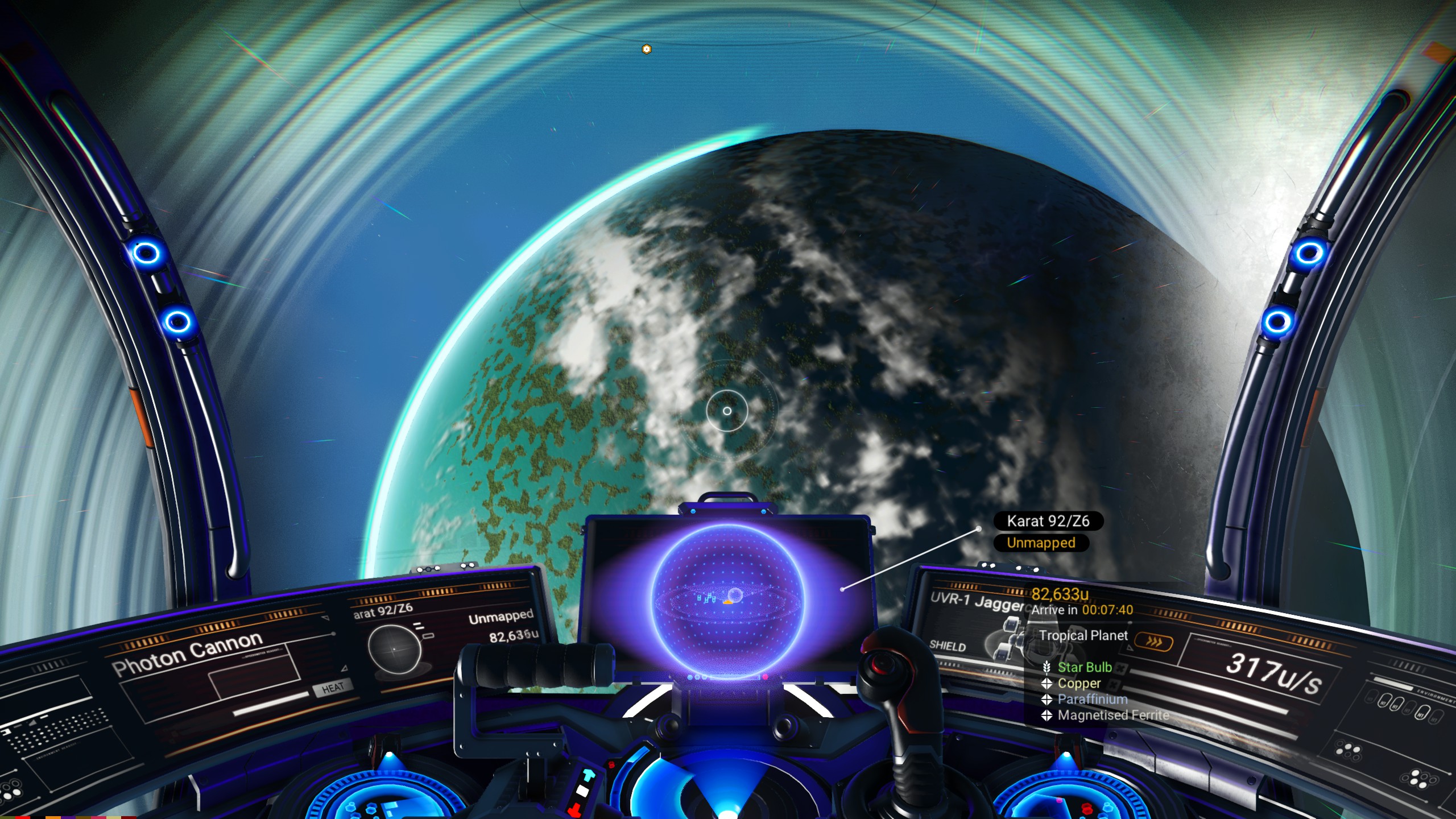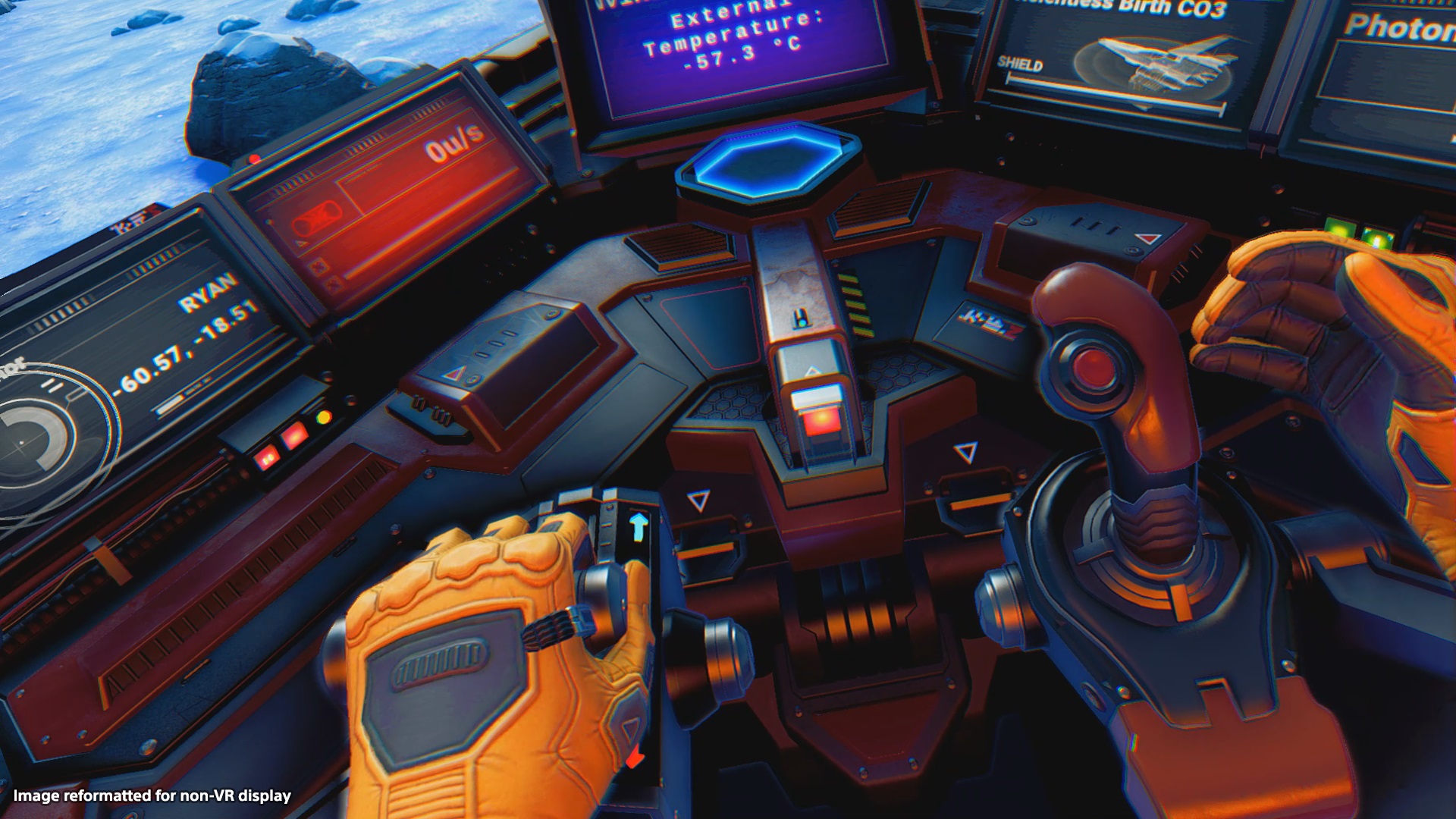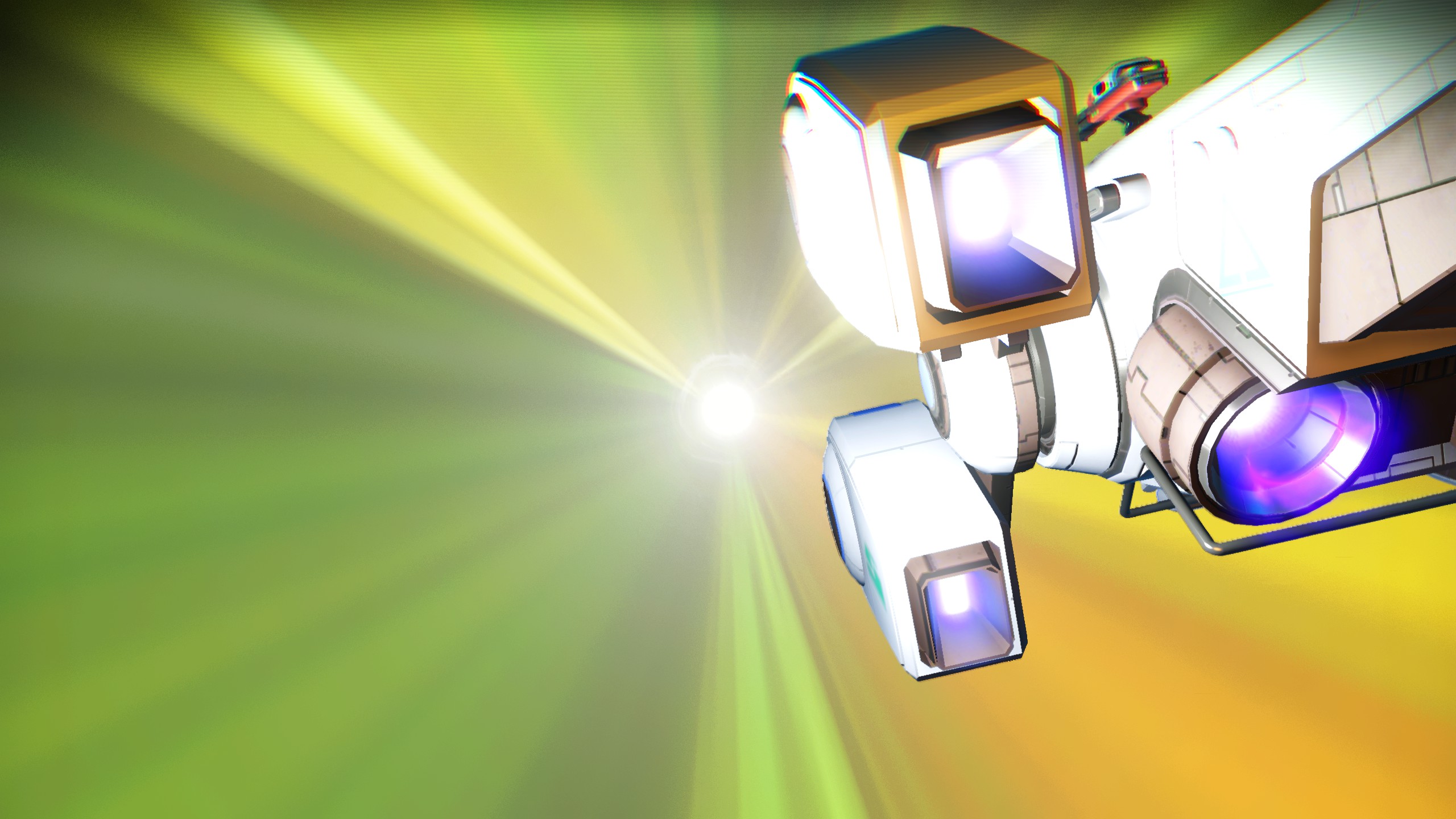No Man’s Sky VR support has officially arrived in the Beyond Update and we’ve got our fully finalized official review for the PSVR version of the game right here.
[vc_row][vc_column][vc_column_text]
Every game of No Man’s Sky begins both exactly the same and completely differently for each person. New players always awake on a strange, unfamiliar planet with nothing but a space suit and displaced spaceship awaiting repairs with the guidance to follow an identical set of instructions to get up and running — it’s the same, but different.
You see, No Man’s Sky is built on top of Hello Games’ ambitious procedural generation system that crafts billions of planets across millions of star systems and simulates plants, animals, terrain, alien species, economies, and more throughout the entire universe as a whole. Initially released three years ago, No Man’s Sky has evolved over the years and dramatically improved itself up until now, the Beyond Update, which is officially 2.0 for the non-VR version. With this update comes a revamped multiplayer experience, tons of new game mechanics like creature taming and expanded base building, and most importantly, complete VR support. At least, the 1.0 edition of VR as Sean Murray from Hello Games puts it.
The premise alone for No Man’s Sky is almost too good to be true, especially when you add VR support into the mix, and that’s probably why it’s taken over three years post-launch to get to this point. This is a game in which you can explore a vast, massive planet full of unique flora and fauna, go mining, dig caves, explore underwater, terraform, build bases, and uncover ancient relics — then take off and fly to another planet or solar system and do it all over again without ever hitting a loading screen. It’s remarkable. And seeing it all from inside of a VR headset is a rare kind of escapism I haven’t seen executed this well before.
I’m frankly envious of someone that can don a VR headset for the first time and experience a game like this as their introduction to the medium. There is so much to do and see it will likely sour the taste of future experiences. Even though I could be considered a VR veteran at this point, it still caught me by surprise just how staggering the sense of scale was or the illusion of presence as I stood on my starting planet, stranded and alone. It’s the difference between wanting to finish the tutorial so you can get to the real game and wanting to find the necessary resources to keep surviving. It’s a connected universe that feels much larger than just a game.
Truth be told No Man’s Sky is a bit like several games jammed together into one package. While there is a main storyline about aliens, ancient civilizations, and solving mysteries, that’s far from the point of it all. This is basically, “it’s not the destination that matters, it’s the journey” boiled down into a video game. The sense of discovery is so ingrained into No Man’s Sky’s DNA that players can rename everything they discover from planets and solar systems to animals and flora.
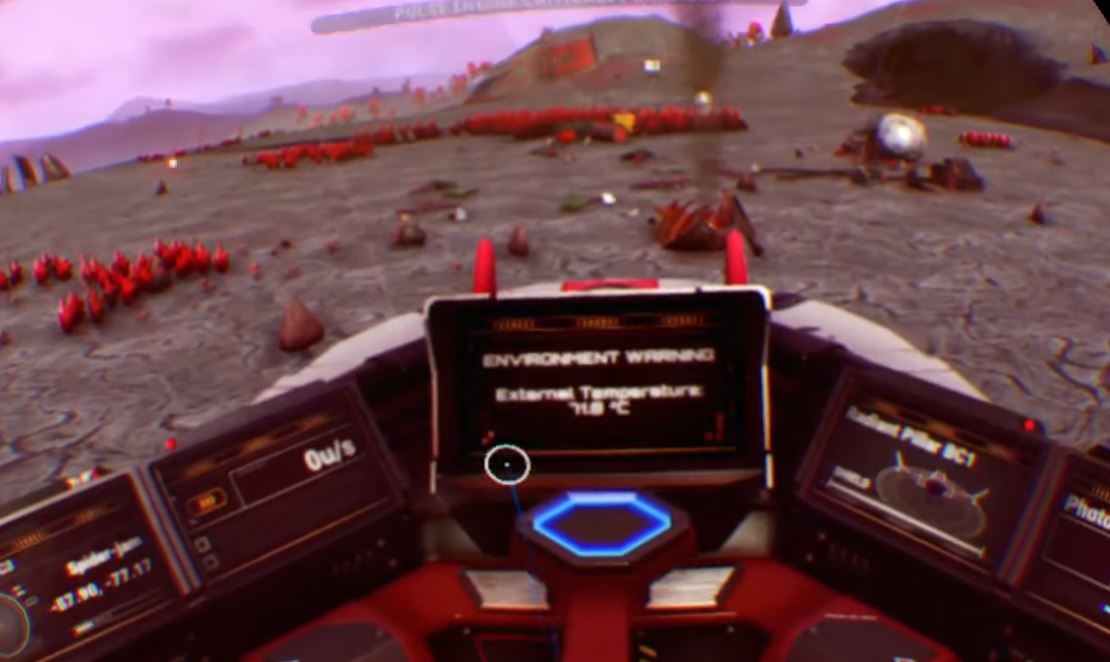
With that ambition though, to let No Man’s Sky offer a bit of everything, is the caveat that none of the individual pieces are as refined or as deep as they could be. I wouldn’t go so far as to say it’s as vast as an ocean and as deep as a puddle, but there are whiffs of that notion throughout. For example, combat is about a bare bones as it gets — especially on foot. You point and shoot your mining beam for rudimentary attacks early on or point and shoot your boltcaster and other weapons you’ll eventually unlock later in the game. There isn’t a stat-based progression system of any kind, no abilities you unlock, it’s just very basic. Obviously you can install new technologies on your exosuit and ship to get that sort of gradual advancement, but it’s rarely combat focused.
Other aspects like ship and exocraft controls feel very wonky and floaty in VR at first, taking some real getting used to. UI navigation is mostly intuitive with lots of holographic menus that you point at to make selections, but it gets tedious after a few dozen hours. Quick gesture commands in place of hot keys could have helped a lot. And targeting icons when using the Analysis Visor, something that was already tough to do in non-VR at times, is nearly impossible in VR. The lack of a crosshair just makes it painfully frustrating to accurately pick what you want to tag on the horizon when icons are cluttered together.
Hello Games have stopped just short of establishing this as a true MMO, but most of the pieces are here. The whole universe is persistent and players can see your bases on your planets and find things that you’ve named in real-time. If you’re on the same planet as another player at the same time, you’ll probably see them even if you’re not in a “group” together. But you can absolutely link up with friends and go exploring together or visit the new Space Anomaly social hub that includes a Nexus full of group multiplayer missions.
Hopefully the networking issues are resolved soon though, because it makes it difficult to enjoy a lot of the new functionality. While playing in a group with friends, there is a weird desyncing issue that pops up where you can see their icon and hear each other like you’re on the same planet, but cannot see each other. Like they exist in a separate but identical dimension. Avatars freeze in place and stop moving forcing a reload as well. Not to mention the slew of bugs that still exist like container items suddenly not letting you interact, your ship spinning in circles instead of landing at the Space Anomaly, or objects and terrain clipping through your base sporadically.
There are a lot of moving parts here and a lot of those parts are still broken, especially in VR.
The Nexus missions in the new Space Anomaly hub offer great replayable variety with good rewards, too. Hunting down a pack of space pirates as a group, for example, can net well over 200,000 units. Some missions even task you with things such as establishing colonies and outposts on planets or taming creatures.
This is an incredibly dense and complex game. I’ve logged about 40 hours since the VR update released, a bit of which has been outside of VR to compare things, and I still feel like I’ve barely scratched the surface. I’ve still got some base building tutorial missions left uncompleted in my log because I keep getting sidetracked with other activities.
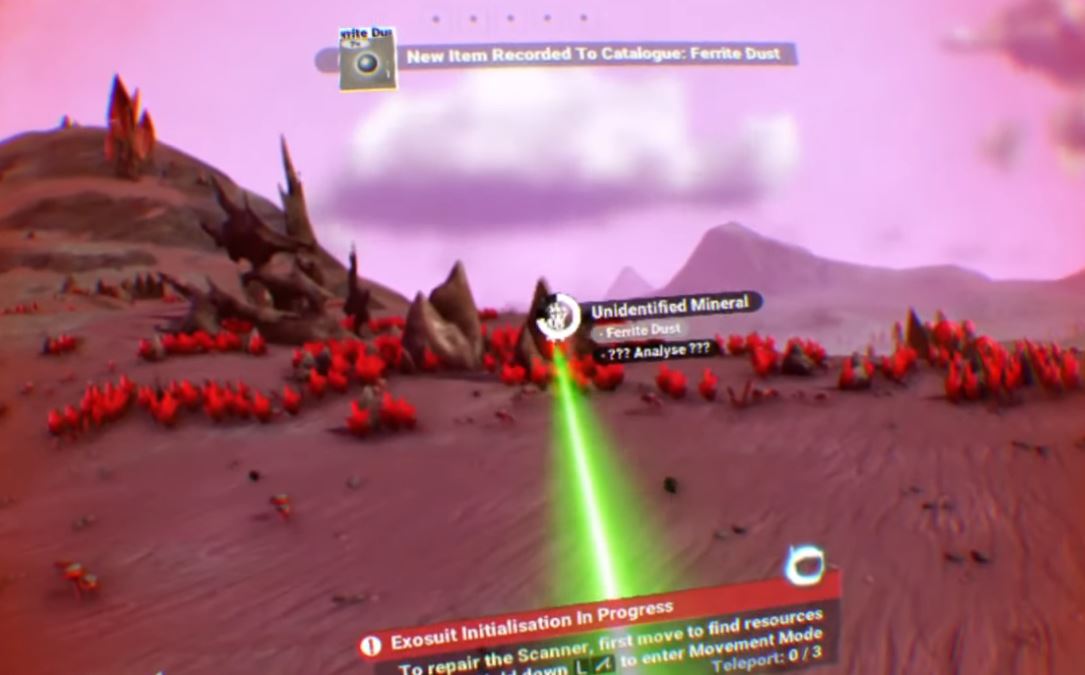
No Man’s Sky is all about diversions like this. You could do any one of a thousand things that may seem trivial or boring at first, and then realize you spent six hours digging holes and stocking up on resources for your next base building expedition. I’ve flown around in space, hunting pirates and blowing up asteroids for precious minerals for hours while listening to podcasts and music while inside the headset, like an intergalactic bounty hunter. I’ve also sat in my cockpit while acid rain pours down with my eyes closed, relaxing, while I listen to the droplets bounce off the glass.
When playing No Man’s Sky in VR it’s easy to not only get lost in terms of finding purpose and direction with what to do next in this nearly infinite procedural sandbox, but to get lost mentally as well; to lose yourself and forget about reality. It’s an overwhelming and captivating feeling that amplifies everything else the game does so well.
There are just so many things to do and see it’s hard to summarize my thoughts and experiences, let alone articulate the breadth of it all.
As far as VR ports are concerned, No Man’s Sky is head and shoulders above its peers in terms of pure functionality. Performance issues aside, they’ve done tremendous work to get the game running and feeling “right” inside a headset. Everything from the inventory interactions, terraforming planets, driving vehicles, flying ships, shooting guns, building bases, and more is completely changed to fully support VR motion controllers. I’d even go so far as to say that building bases, manipulating terrain, and mining resources feels better than it does in non-VR mode because of the spatial awareness and 3D presence offered in a headset.
One of the most intuitive parts of it all is the wrist-based menu system that has you point at your wrist to pull up holograms of components for building or even a tiny hologram of your ship prior to summoning it. Reaching out with your hands and pointing feels extremely natural, albeit a bit clunky for some things. It’d be nice if there was a single gesture or button that opened your inventory since you spend so much time looking at it instead of having to twist your wrist and laser point at the right spot each time first.[/vc_column_text][/vc_column][/vc_row][vc_row][vc_column][vc_cta h2=””]Comfort
Comfort options are pretty standard in No Man’s Sky. You can switch between both smooth and teleport-based locomotion as well as both snap and smooth turning. There’s also a field of view dimmer. On PSVR you can use both PS Move controllers and the DualShock 4 controller at any time, freely. A good method is to stand with Moves while out of a vehicle and then sit with DualShock when inside of a vehicle. Technically you can move around the room while playing, but if you get too far away from the “center” of the play space it asks you to return or recenter manually. There are plenty of options to keep No Man’s Sky as comfortable as possible while playing, but the real bottleneck on PSVR is the visual difference.[/vc_cta][/vc_column][/vc_row][vc_row][vc_column][vc_column_text]
No Man’s Sky PSVR Final Verdict
No Man’s Sky is very much more than the sum of its parts. When looked at under a microscope individually, each element can show significant blemishes with plenty of room to be more polished, more dynamic, and more expansive, but to focus too intently on the moving parts and not take it in as a collection of its immersive ambitions would be missing the point. Performance issues and some non-game breaking bugs aside, to appreciate what makes No Man’s Sky VR so special is to appreciate the underlying appeal of VR as a medium. They’re both about exploring a vast, endless sea of fantastical destinations. They’re both about embodiment and unrivaled immersion. And above all else they’re both about becoming who you want to be by exploring the far corners of seemingly limitless potential.
With regard to the PSVR version specifically, it’s no small miracle that the game runs on Sony’s headset at all. But the game takes a significant hit in the visuals department. Planets and space stations are really blurry, which is a massive shame for a game all about exploration. You can also expect longer load times when first booting the game up. The game is still entirely playable, but there’s no question that the PC VR version is the superior of the two. There’s currently no difference between the standard version of the game on PS4 and the PS4 Pro, so there’s hope that Hello Games could improve the latter version later on.
No Man’s Sky is available with optional VR support on both PC and PS4. This review is specifically focused on the PSVR version using a standard PS4. For more on how we arrived at this score, read our review guidelines.
And for more on No Man’s Sky VR, read our guides on base building, changing your appearance, and getting started with beginner info from a VR perspective. Or you can read our detailed interview with Sean Murray himself.
You can read our PC VR-focused version of this review right here.
[/vc_column_text][/vc_column][/vc_row]

